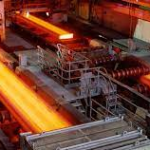 China’s oversupplied steel market may soon find some relief as the downward trend in demand is expected to end in the short term.
China’s oversupplied steel market may soon find some relief as the downward trend in demand is expected to end in the short term.
China’s daily pig iron production reached a record high in April, at a time when the market faced tepid demand, keeping steel markets under pressure.
Although the oversupply in China’s steel market is unlikely to abate for at least this month, some industry sources have become optimistic about the demand outlook, predicting that the decline will end in the short term.
The improvement in the demand outlook is expected to come mainly from China’s latest move, which cut interest rates on home loans by 0.2 points for first-time homebuyers on May 15, indicating that the country has shifted from deleveraging to supporting the real estate sector.
Although this move will not reverse the downward trend in property sales or new housing starts in the short term, it signals the introduction of more favorable policies to prevent uncontrolled default by cash-strapped builders, which will ease further compression of steel demand.
Most importantly, measures to deal with the pandemic situation will soon begin to bear fruit, leading to smoother logistics movement within the country.
Social restrictions and shutdowns in China caused by the pandemic were the main causes of the slump in April’s economic data and hampered stimulus measures in the infrastructure, real estate and manufacturing sectors.
Some market sources believe that as soon as logistics and travel return to normal, China’s fiscal and monetary policy will help accelerate infrastructure investment and manufacturing output.
China’s retail consumption will also improve in tandem, thereby supporting the recovery of steel demand in the manufacturing sector. China’s pig iron production in April reached 76.78 million tons, averaging 2.55 million tons per day, up 10.80 percent on the month.
The April figure was unchanged year-on-year as the NBS revised April 2021 pig iron production from 75.97 million tons to 76.78 million tons.
China’s crude steel production in April was still 5.20 percent lower than year-on-year at 92.78 million tons, but daily output increased 8.60 percent on the month to 3.09 million tons, surpassing the 3 million ton level for the first time since July 2021.
According to NBS data, China’s pig iron and crude steel production in the first four months was 280.30 million tons and 336.15 million tons, respectively, down 9.40% and 10.30% year-on-year.
Some market sources expected China’s pig iron and crude steel production in May to be at similar levels as in April. Chinese steel mills with electric arc furnace, or EAC, reduced steel production due to loss-making market conditions. However, production reductions were barely reported by integrated steel mills using a blast furnace and converter, as they continued to post small profits or only marginal losses.
Since the suspension and restart of blast furnaces are costly, marginal losses do not prompt steel mills to cut production of pig iron and crude steel. China’s recovery from COVID-19 cases in April exacerbated the slowdown in the real estate sector, adversely affecting overall steel demand more than production.
The value of real estate sales in China, now one of the main channels for financing real estate construction, fell 38.80 percent year-on-year in April, down further from a 17.70 percent year-on-year decline in March.
The year-on-year decline in real estate investment also worsened, from 22.20% in March to 44.20% in April. Chinese infrastructure investment increased 3 percent year-on-year in April, but the pace slowed from the 8.80 percent year-on-year growth in March.
Major steel consumers in the manufacturing sector also posted a year-on-year decline in April, with vehicle production down 43.50 percent year-on-year.
Major steel consumers in the manufacturing sector also reported a year-on-year decline in April, with vehicle production down 43.50 percent year-on-year.
However, on May 16 Shanghai announced the lifting of closures that began in late March, indicating that the city and the entire country may soon gradually return to normal, which is unlikely to further affect construction and manufacturing activities.
.gif) Loading
Loading

